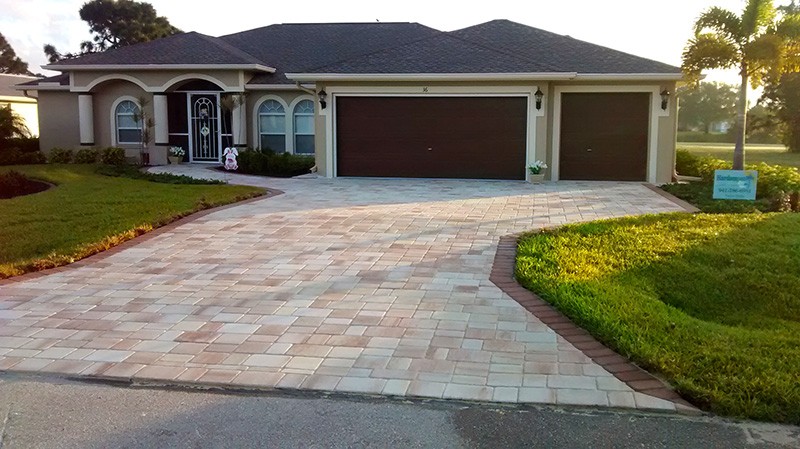There’s some debate about whether it’s essential to do paver sealing of concrete or not. Sure, homeowners prefer to apply a sealant to enhance the color of pavers and shield the pavers from staining.
If you’re planning to apply sealant by yourself, keep in mind that applying the process is complex. To get the best results, it’s an excellent idea to thoroughly study the various sealant options available and the best method of applying them or employ an experienced contractor to handle the job for you.
Suggestions for paver sealing
In the meantime, here are a few suggestions to help you get going in the right direction:
- Make sure to wait until and unless the efflorescence is wiped away. The efflorescence appears as a white haze visible upon the paver’s surface. It’s the result of naturally stirring salts present in the base material and aggregates used to make the stone. The appearance of efflorescence is not pleasant; however, it will fade gradually. It’s recommended to wait a few months (or even up to an entire year) before sealing the area to ensure that the efflorescence is gone.
- Check that the pavers are in good condition. Apart from the non-appearance of efflorescence, the pavers must be free of debris and free of staining. The paver could enhance any stains.
Pavers are dry before sealing.
- Make sure that the pavers must dry before doing sealing. After you have cleaned your pavers, allow them time to dry thoroughly. In sunny, warm conditions, your pavers will appear dry and prepared for sealing within a couple of hours. While In the cooler climates and shady areas, allow 24-hours before doing the sealing.
- Be aware of the weather forecast for paver sealing. It will take 24 to 72 hours dry conditions following applying sealing agent. Check to see if the forecast does not suggest rain.
- Make sure to check and evaluate the temperature. The general rule is that somewhere and somehow between 50-90 degrees is ideal. However, the optimal temperature is 75 degrees and sunny. Be aware that solvent-based pavers will easily evaporate faster, so the lower temperatures are more suitable for the application.
Application sprayer
- Make use of the application sprayer. You can search about application sprayer, which can be found at any hardware shop, helps you perform your work more quickly, and also helps to ensure that you’re applying an evenly coated coat of the sealant.
- Infuse the pavers with water. Please ensure the pavers are soaked so that they shelter all the fractures. Use dry rollers to absorb excess sealant, avoiding drip marks and lines.
- Do not make a stop to eating lunch. It is best not to leave a wet area over an uninterrupted area. After you’ve started working, complete the task.
- Give yourself time to cure. It is necessary to have at least 48 hours of dry atmosphere and weather after the sealer is put on. (Remember to shut off your spontaneous water sprinklers.)
When you notice visible signs of the wear, or you notice a change in color during rain, and the paver is beginning to thin, you’re thinking about putting a new coating.
Last words
The top 9 strategies to ensure a successful paver sealing job for your paver. If you follow these easy steps, you’ll be able to ensure that your pavers look great for the years to come. Are we missing something? If yes, you have a suggestion, please leave it in the comment section below, and we’ll try our best to respond to any questions you have. Thank you for taking the time to read!




